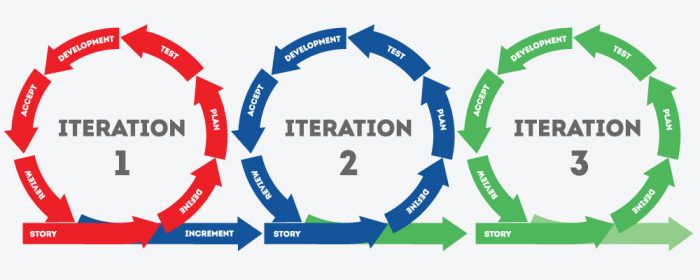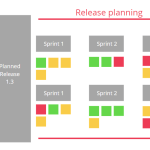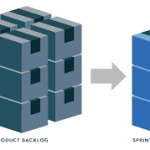The purpose of iteration planning is for the team to complete the set of top-ranked product backlog items. This commitment is time boxed based on the length of iteration and team velocity.

Who is Involved?
● Scrum Master − The scrum master acts as a facilitator for the agile delivery team.
● Product Owner − The product owner deals with the detailed view of the product backlog and their acceptance criteria.
● Agile Team − Agile delivery defines their tasks and sets the effort estimates required to fulfil the commitment.
Prerequisites of Planning
● Items in product backlog are sized and have a relative story point assigned.
● Ranking has been given to portfolio items by the product owner.
● Acceptance criteria has been clearly stated for each portfolio item.
Planning Process
Following are the steps involved in iteration planning −
● Determine how many stories can fit in an iteration.
● Break these stories into tasks and assign each task to their owners.
● Each task is given estimates in hours.
● These estimates help team members to check how many task hours each member have for the iteration.
● Team members are assigned tasks considering their velocity or capacity so that they are not overburdened.
Velocity Calculation
An agile team calculates velocity based on past iterations. Velocity is an average number of units required to finish user stories in an iteration. For example, if a team took 12, 14, 10 story points in each iteration for the last three iterations, the team can take 12 as velocity for the next iteration.
Planned velocity tells the team how many user stories can be completed in the current iteration. If the team quickly finishes the tasks assigned, then more user stories can be pulled in. Otherwise, stories can be moved out too to the next iteration.
Task Capacity
The capacity of a team is derived from the following three facts −
● Number of ideal working hours in a day
● Available days of person in the iteration
● Percentage of time a member is exclusively available for the team.
Suppose a team has 5 members, committed to work full time (8 hours a day) on a project and no one is on leave during an iteration, then the task capacity for a two-week iteration will be −
5 × 8 × 10 = 400 hours
Planning Steps
● Product Owner describes the highest ranked item of product backlog.
● Team describes the tasks required to complete the item.
● Team members own the tasks.
● Team members estimate the time to finish each task.
● These steps are repeated for all the items in the iteration.
● If any individual is overloaded with tasks, then his/her task is distributed among other team members.


